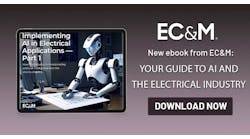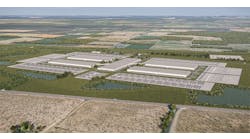The world no longer operates the way it did two years ago, and yesterday’s solutions won’t solve today’s problems. The meaning of home has shifted. As more companies adopt permanent remote working policies — with a quarter of professional jobs expected to be remote by the end of 2022 — it will continue to act as both an office and living space for many people. On top of that, extreme weather continues to intensify and hit new areas of the country with conditions some people have never experienced before. Southern areas are seeing plunging temperatures and harsher winter storms, while the northern regions are experiencing more intense heatwaves.
Home owners need to adapt their spaces for this new reality, where they face increasingly harsh weather that can lead to power disruptions, all while spending more time than ever before at home. For those working from home, they’ll need to ensure they have the same reliable power supply and connection they’d have in the office.
There will be a rise in investments in home energy systems this year as homeowners look for long-term solutions that offer greater resiliency and safety measures. This presents an opportunity for electrical contractors, who can advise their customers on the investments and power systems that will make the biggest impact on these goals.
Increasing demand around home resiliency
Having reliable power at home has never been more important, a fact that the pandemic and rising instances of extreme weather — like last year’s Texas winter storm — have exposed. The power grids are old and becoming less reliable, as residents in places like California, who face regular shutoffs during peak wildfire season, can attest. Homeowners across the country are realizing they can’t rely on the grid for consistent power and need to take measures to protect their families and livelihoods into their own hands.
The path to adding backup power sources to homes isn’t always straightforward. Homeowners must navigate a myriad of options — including solar, generators, and backup batteries — to determine what system best fits their needs. Traditional methods of adding multiple power sources to a home have often used several panels with complex connections that sometimes require a manual switch to move from one source to another. This can be inhibitive to homeowners who aren’t well-versed in home power systems.
With the introduction of new technology options over the past couple of years that can condense backup power sources and offer homeowners more control over which system is in use, there will likely be a rise in power management system upgrades in the coming year. Homeowners in 2022 are going to look for solutions that will help maintain energy resiliency in their homes by installing multiple backup power sources that can be easily switched (depending on power needs). Having the ability to decide what circuits to power on the fly and having control over which power source is being used will also become more important.
Connected devices will be in high demand
The rise in home Internet of Things (IoT) device adoption has been steady for years, but we’ve reached a point where homeowners are looking beyond voice assistants and smart light bulbs toward connected devices that help them increase their home's resiliency and save money. For home energy systems, this includes connected thermostats, outlets, and switches that can help regulate energy use for heating and cooling systems and monitor power consumption down to the plug level. These connected devices provide a deeper insight into how energy is being consumed and can show which appliances and devices in a home are contributing the most to energy bills and inefficiencies.
There’s a shift taking place in the home energy space that will continue throughout 2022, where energy management systems are viewed through a more modern mindset. Consumers are beginning to demand their power systems be as “smart” as other technology they regularly use, such as smartphones, voice assistants, etc. Electrical contractors should look to tap into this trend by understanding the technology and tools available in the market, so they’re able to advise customers on the best power management systems and connected devices for their needs.
Safety to become a top priority for home technology
Having a reliable power supply is imperative to safety, especially during colder months when a loss in power can create dangerous conditions by shutting off the heat and making it difficult to store and prepare food safely. This is why easy-to-control backup power sources are essential not only to maintain home resiliency, but also to provide an extra layer of safety.
Connected energy devices play a key role in safety. The same devices that can monitor appliance efficiency and power use from a cost-savings perspective can also give homeowners added peace of mind. Even when they’re not at home, a connected outlet and energy monitoring system could allow a homeowner to see which appliances are using energy and identify if they left an appliance, such as an oven on or a curling iron plugged in (both of these examples would be major fire hazards). Some connected energy management systems even give the homeowner the ability to cut power to that outlet remotely through a smart relay in the panel or through the smart outlet itself — without needing to go home and manually unplug the device.
Looking to the future
This year will likely be a time when homeowners look for long-term solutions to new challenges they face. For electrical contractors, this means customers will be looking to equip their homes with the right energy management technology that will allow them to increase the resiliency and safety of their homes. Luckily, there have been advances in home energy management technology over the last couple of years, which will provide contractors with solutions to meet these ever-changing needs.
Brad Wills is the director of strategic customers and programs at Schneider Electric. He can be reached at b[email protected].





